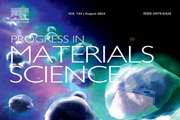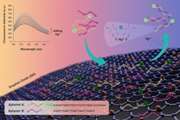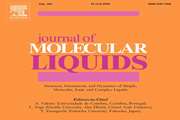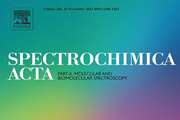How biomimetic nanofibers advance the realm of cutaneous wound management: The state-of-the-art and future prospects
انتشار مقاله در حوزه مهندسی مواد در مجله معتبر با ضریب تاثیر بالا نتایج یک مقاله مروری با همکاری پژوهشگران مرکز تحقیقات بیوسنسور پژوهشگاه علوم غدد و متابولیسم دانشگاه علوم پزشکی تهران، دانشگاه آزاد واحد علوم تحقیقات، دانشگاه صنعتی شریف، دانشگاه بارسلونا، و دانشگاه فلوریدای مرکزی، در حوزه کاربرد نانوالیاف بیومیمتیک در بهبود زخم و بازسازی پوست در مجله معتبر Progress in Materials Science با ضریب تاثیر ۳۷/۴ و نمره ارجاعات ۶۷/۵ منتشر شد. این مقاله به مروری بر پیشرفتها و روش های نوین در طراحی مواد نانو فیبری بیومیمتیک با پتانسیل بالا برای بهبود زخم و بازسازی پوست میپردازد.
Mercury (II) sensing using a simple turn-on fluorescent graphene oxide based aptasensor in serum and water samples
Abstract A simple, highly sensitive, and selective fluorometric aptasensing platform based on aptamer and graphene oxide (GO) is proposed for the determination of mercury (II) ion (Hg2+). In the designed assay, two aptamer probes, a carboxy-fluorescein (FAM) labeled aptamer (aptamer A) and its complementary (aptamer B) with partial complement containing several mismatches and GO as the quencher were used.
Emergence of sweet ligand-protein complexes from seemingly non-sweet conformations
Sweet taste perception starts from the interaction of a sweet molecule with residues of the sweet taste receptor (STR). Yet, how the perception of sweet taste emerges from this interaction is still not clear. Here, we reveal a potential mechanism in the initial stages of this cascade.
Electrochemical Sensing Based on Nanofibers Modified Electrodes for Application in Diagnostic, Food and Waste Water Samples
Electrochemical sensors and biosensors are today important analytical and monitoring tools in various fields, from agriculture and the food industry to environmental and biomedical/pharmaceutical applications.
Structural insights into the pathogenicity of point mutations in human acyl-CoA dehydrogenase homotetramers
Acyl-CoA dehydrogenase deficiency (ACAD) is an inherited and potentially fatal disorder with variable clinical symptoms. The relationship between pathogenicity and deleterious point mutations is investigated here in ACAD structures of short (SCAD) and medium-chain (MCAD) types.
Synthesis and molecular docking studies of new aryl imeglimin derivatives as a potent antidiabetic agent in a diabetic zebrafish model
Diabetes mellitus (DM) is a persistent, progressive, and multifaceted disease characterized by elevated blood glucose levels. Type 2 diabetes mellitus is associated with a relative deficit in insulin mainly due to beta cell dysfunction and peripheral insulin resistance. Metformin has been widely prescribed as a primary treatment option to address this condition.
Poly-ε-Caprolactone/Propolis Electrospun Yarns as Suture
Electrospinning is a well-known promising technique for the cost-effective and rapid fabrication of therapeutic-loaded nanofibers. Electrospun fibers have many merits that give them prospects in the production of therapeutic-loaded sutures.
Nitrogen and sulfur co-doped carbon quantum dots fluorescence quenching assay for detection of mercury (II)
Mercury is a highly toxic and potentially bioaccumulative heavy metal ion that can cause severe health problems in humans even at very low concentrations.
A Label-Free Electrochemical Aptasensor Based on Screen Printed Carbon Electrodes With Gold Nanoparticles-Polypyrrole Composite for Detection of Cardiac Troponin I
Cardiac troponin I (cTnI) is a specific biomarker in the diagnosis of acute myocardial infarction (AMI). In this study, a label-free electrochemical aptasensor was developed for the detection of cTnI using an aptamer probe and conductive polypyrrole (PPy)-gold nanoparticles (AuNPs) as electrode substrate.
Application of polysaccharide biopolymers as natural adsorbent in sample preparation
Preparing samples for analyses is perhaps the most important part to analyses. The varied functional groups present on the surface of biopolymers bestow them appropriate adsorption properties.












